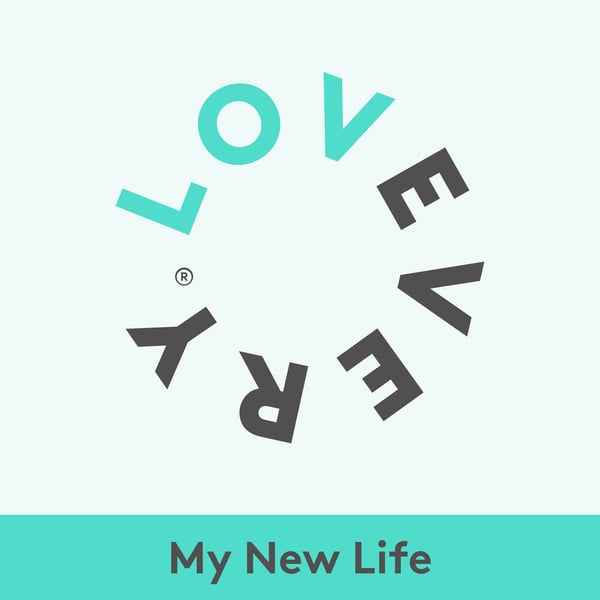Montessori literacy
My New Life
Kate Garlinge
4.7 • 654 Ratings
🗓️ 1 May 2024
⏱️ 22 minutes
🧾️ Download transcript
Summary
Even if your 3-year-old can recite their ABCs like a pro, they’ll need to learn that spoken words are made up of individual sounds to succeed at reading. Hands-on activities that build this kind of phonemic awareness — and reinforce the connection between letter sounds and letter shapes — are the best way to teach them what they need to know.
As with all kinds of hands-on learning, Montessori is a great place to start! Did you know that in Montessori classrooms, children learn to spell before they learn to read? Word building with the moveable alphabet is at the heart of this process. In this first episode in the Montessori series, My New Life Host Jessica Rolph is joined by Laura Saylor, co-author of Powerful Literacy in the Montessori Classroom.
Takeaways:
-
The reading journey starts with building your child’s phonemic awareness. In other words, playing with sounds. Begin recognizing initial sounds, and then move to the sounds at the end and middle of words. “I spy with my little eye something that ends with the sound dd.”
-
Rather than memorizing the ABCs, Montessori teachers will often start with letter sounds. Once the sounds are mastered, they will move to the names of the letters.
-
In the Montessori world, children learn to spell before they learn to read. Word building with the moveable alphabet is at the heart of this process. Try focusing on one sound at a time, creating a variety of 3-letter words with the short U, for example: sun, gum, bun. Lovevery has a moveable alphabet game that capitalizes on a 4 year old’s enthusiasm for little objects by rewarding them with a tiny object representing the word they spell.
Mentioned in this episode:
Brought to you by Lovevery.com
Powerful Literacy in the Montessori Classroom
Receive weekly emails about your child’s development, and stay in the know about new play essentials, promos, and more by signing up at Lovevery.com
Follow Lovevery and Jessica Rolph on Instagram
Transcript
Click on a timestamp to play from that location
| 0:00.0 | Welcome to My New Life, a Love Every podcast. |
| 0:08.4 | I'm your host, Jessica Rolfe. |
| 0:10.7 | In this Montessori miniseries, we interview experts on literacy, math, and handwriting. |
| 0:16.4 | Montessori programs only exist in about 7% of U.S. zip codes. |
| 0:20.6 | At Lovevery, we want to make Montessori |
| 0:22.4 | universally accessible and help you bring the teachings and materials into your home. This |
| 0:28.5 | mini-series aims to make that easier for you. Even if your three-year-old can recite their |
| 0:34.2 | ABCs like a pro, they'll need to learn that spoken words are made up of individual |
| 0:38.9 | sounds to succeed at reading. Hands-on activities that build this kind of phonemic awareness |
| 0:43.8 | and reinforce the connection between letters sounds and letter shapes are the best way to teach |
| 0:49.6 | them what they need to know. As with all kinds of hands-on learning, Montessori is a great place to start. |
| 0:56.1 | And did you know that in Montessori classrooms, children learn to spell before they learn to read? |
| 1:01.3 | Word building with the movable alphabet is at the heart of this process. Laura Saylor is the co-author |
| 1:07.0 | of powerful literacy in the Montessori classroom. Welcome, Laura. Thank you so much. I'm excited to |
| 1:13.0 | be here. I'm excited to start with the basics. So what are some signs that a child is ready to learn |
| 1:19.7 | to read? So I think I would actually take a little bit of a step back. I think we really want to |
| 1:25.8 | think about children's just initial interests in the language. |
| 1:30.0 | Of course, that starts when they're very young. But we also want to make sure they have really |
| 1:34.4 | strong phonymic awareness, making sure that they're really aware of the sounds that they're |
| 1:39.1 | hearing in the language, right? Sometimes you'll notice that children will look at something and they'll |
| 1:45.6 | kind of play with the sounds they're hearing in the word. So perhaps you have a mop out or something |
| 1:51.3 | like that. And so they'll be very excited about a mop. And they might say something like |
... |
Please login to see the full transcript.
Disclaimer: The podcast and artwork embedded on this page are from Kate Garlinge, and are the property of its owner and not affiliated with or endorsed by Tapesearch.
Generated transcripts are the property of Kate Garlinge and are distributed freely under the Fair Use doctrine. Transcripts generated by Tapesearch are not guaranteed to be accurate.
Copyright © Tapesearch 2025.

